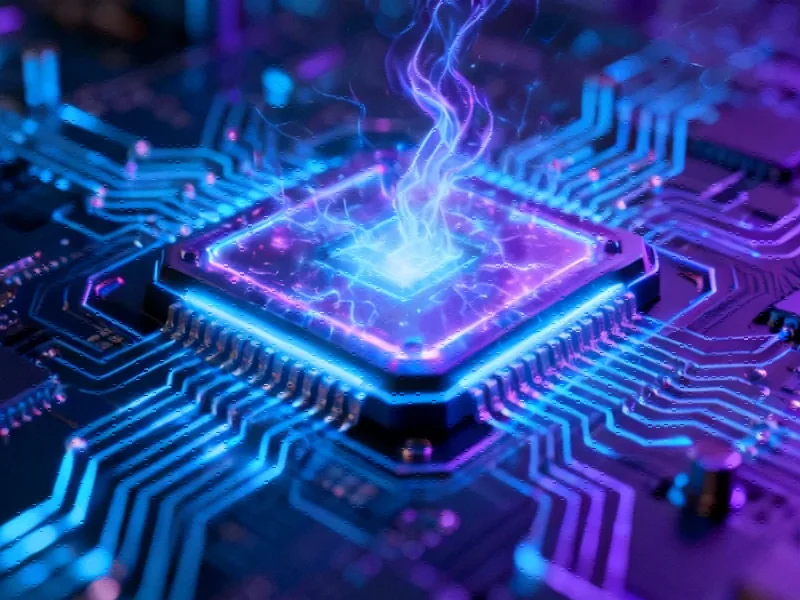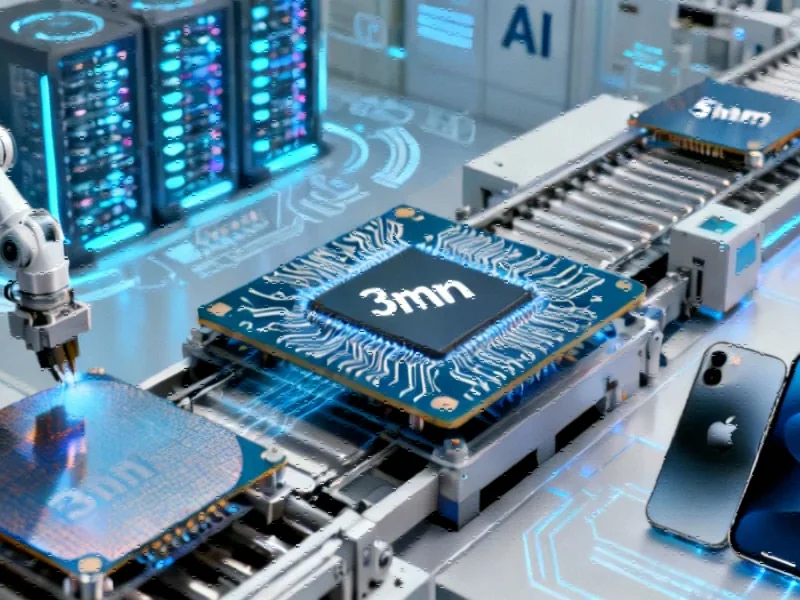The Dawn of a New Era in Processor Technology
After years of incremental improvements in the CPU market, two groundbreaking technologies are poised to revolutionize semiconductor design and performance. Gate-All-Around Field-Effect Transistors (GAAFET) and Backside Power Delivery (BPD) represent the most significant architectural shifts in processor manufacturing in over a decade, promising to address the fundamental limitations that have constrained recent chip development.
While recent processor generations from both Intel and AMD have delivered modest performance gains, the underlying transistor technology has remained largely unchanged since the introduction of FinFET architecture. This technological stagnation has created an opportunity for fundamental innovation that could reshape computing performance across all device categories, from mobile devices to data center servers.
GAAFET: Redefining Transistor Architecture
The transition from FinFET to GAAFET technology marks a pivotal moment in semiconductor evolution. Unlike traditional FinFET designs where gates surround the channel on three sides, GAAFET implements a 360-degree gate structure that completely envelops the silicon channel. This comprehensive gate control significantly reduces current leakage and enables more precise voltage management, resulting in substantial improvements to both performance and power efficiency.
Major foundries including Samsung, TSMC, and Intel are aggressively implementing GAAFET technology in their upcoming 2nm process nodes. Intel’s implementation, branded as RibbonFET, will debut in their 18A manufacturing process and serve as the foundation for their Panther Lake processors. This advanced manufacturing approach represents one of the most significant industry developments in semiconductor history, potentially enabling performance gains that could exceed 40% at equivalent power levels compared to current-generation chips.
Backside Power Delivery: Optimizing Chip Layout
Complementing the transistor revolution is Backside Power Delivery (BPD), which addresses one of the most persistent challenges in chip design: interconnect congestion. Traditional processors route both power and signals through the same side of the silicon wafer, creating physical limitations that constrain performance and efficiency.
BPD technology relocates power delivery networks to the backside of the wafer, freeing valuable front-side real estate for signal routing. This separation enables more efficient power distribution, reduces voltage drop, and allows for higher operating frequencies. Intel’s implementation, branded as PowerVIA, demonstrates how these related innovations can work together to overcome previous physical constraints.
The combination of GAAFET and BPD creates a synergistic effect that could enable the next leap in computing performance. By optimizing both transistor design and power delivery simultaneously, chip manufacturers can achieve density improvements that were previously unimaginable with conventional approaches.
Competitive Landscape and Implementation Timelines
Intel appears to have taken an early lead in bringing both technologies to market, with Panther Lake processors scheduled to showcase the company’s 18A process node featuring both RibbonFET and PowerVIA technologies. These mobile-focused processors aim to combine the power efficiency of Lunar Lake with the performance scaling of Arrow Lake, potentially giving Intel a competitive advantage in the crucial mobile computing segment.
AMD, meanwhile, has shifted its manufacturing strategy for Zen 6 processors, initially planning to use Samsung’s 2nm process before reportedly transitioning to TSMC’s N2P node. Both foundries incorporate GAAFET technology, with BPD integration expected in subsequent iterations. This manufacturing decision reflects the broader market trends toward advanced node technologies that can deliver both performance and efficiency improvements.
The competitive dynamics between these semiconductor giants will likely accelerate innovation, benefiting consumers through improved performance across all computing segments. As these recent technology advancements mature, we can expect to see their influence extend beyond traditional computing into emerging fields including artificial intelligence, edge computing, and advanced mobile applications.
Broader Industry Implications
The adoption of GAAFET and BPD technologies represents more than just incremental improvement—it signals a fundamental shift in how processors will be designed and manufactured for the foreseeable future. These advancements come at a critical time when traditional scaling approaches were showing diminishing returns, potentially revitalizing innovation across the entire technology sector.
These semiconductor breakthroughs are part of a larger pattern of related innovations transforming technology infrastructure. Just as major cloud providers must manage infrastructure reliability—evident during incidents like the major AWS network disruption that affected internet services—chip manufacturers must ensure their technological transitions proceed smoothly.
The timing of these semiconductor advances coincides with other significant technological shifts, including the growing importance of security in modern computing infrastructure. Recent events such as the critical ASP.NET Core vulnerabilities patched by Microsoft highlight how fundamental architectural improvements can enhance both performance and security simultaneously.
The Future of Computing Performance
Looking toward 2026 and beyond, the combination of GAAFET and BPD technologies suggests we’re approaching another inflection point in computing performance. Intel’s Panther Lake represents just the beginning of this transition, with future architectures like Nova Lake expected to further refine these technologies for desktop computing segments.
AMD’s response with Zen 6 and subsequent architectures will determine whether Intel can maintain any potential technological advantage. The competitive pressure between these companies, combined with the fundamental advantages offered by these new manufacturing approaches, suggests consumers can anticipate substantial performance improvements across all computing categories.
These semiconductor advancements are part of a broader technological evolution that includes developments in fields as diverse as energy infrastructure and scientific education. Just as Germany’s energy expansion reflects complex balancing of competing priorities, chip manufacturers must navigate similar challenges in pursuing both performance and efficiency. Similarly, addressing the quantum skills crisis in physics education highlights the importance of foundational knowledge that enables such technological breakthroughs.
The convergence of these technologies promises to make the next generation of processors genuinely exciting, potentially delivering the kind of performance leaps we haven’t witnessed in nearly a decade. As detailed in this comprehensive analysis of next-generation chip technologies, we’re standing at the threshold of a new era in computing performance that could reshape everything from mobile devices to data centers.
These innovations extend beyond traditional computing applications, potentially influencing fields such as medical research and healthcare technology. Recent discoveries about protective immune cells in breastfeeding women demonstrate how computational advances can accelerate research across diverse scientific disciplines, creating opportunities for innovation that extend far beyond the semiconductor industry itself.
This article aggregates information from publicly available sources. All trademarks and copyrights belong to their respective owners.
Note: Featured image is for illustrative purposes only and does not represent any specific product, service, or entity mentioned in this article.



